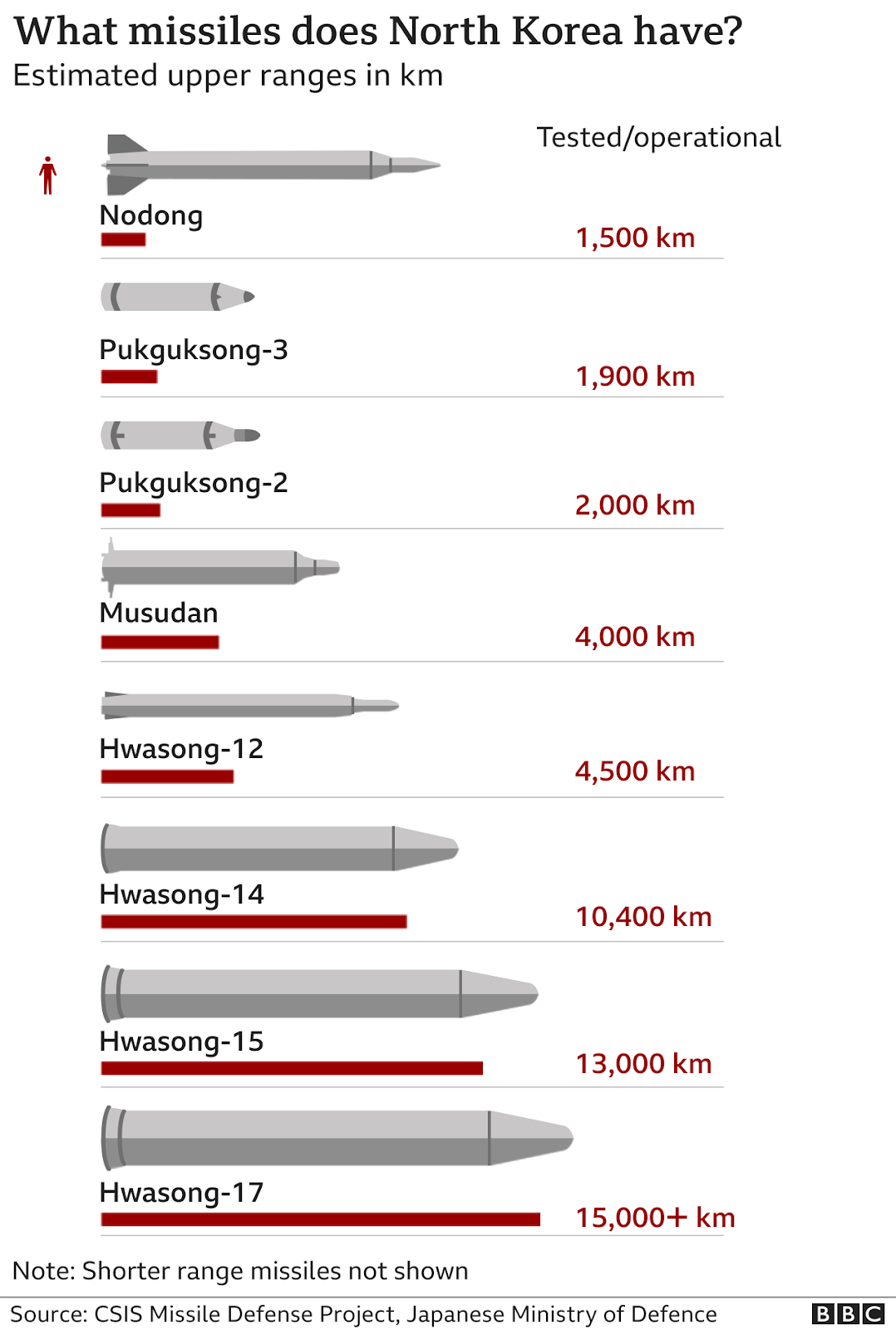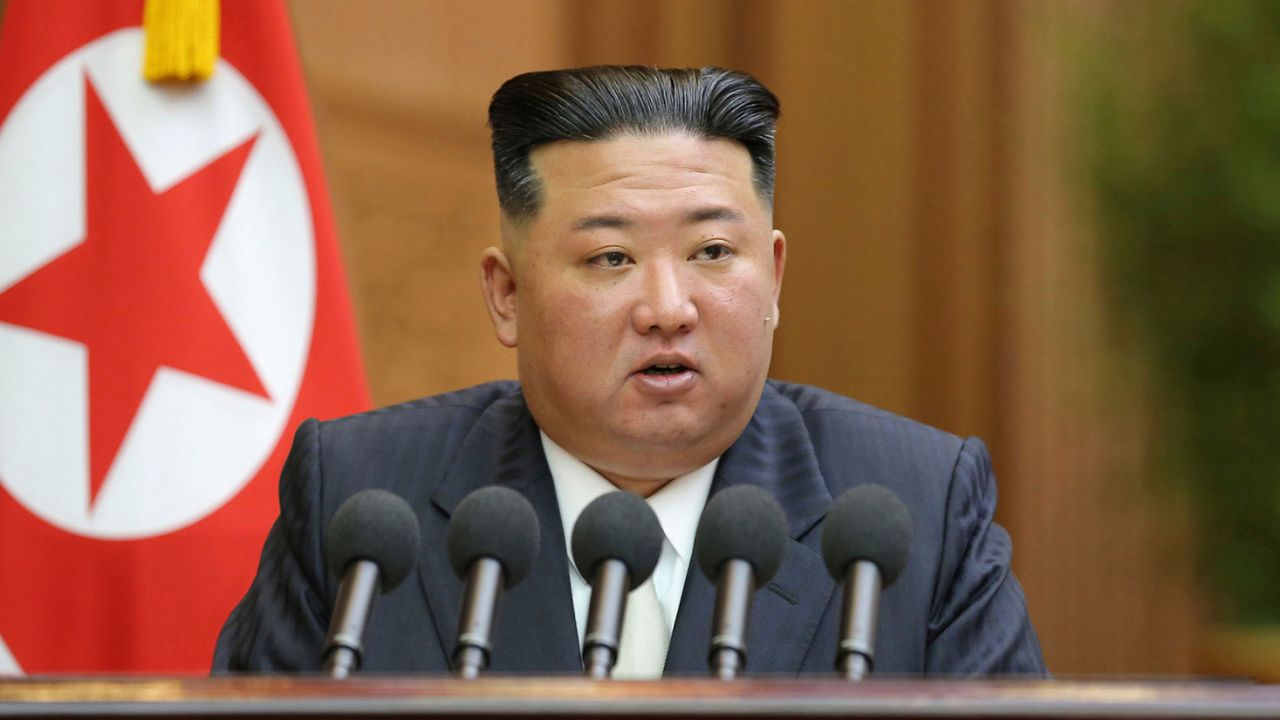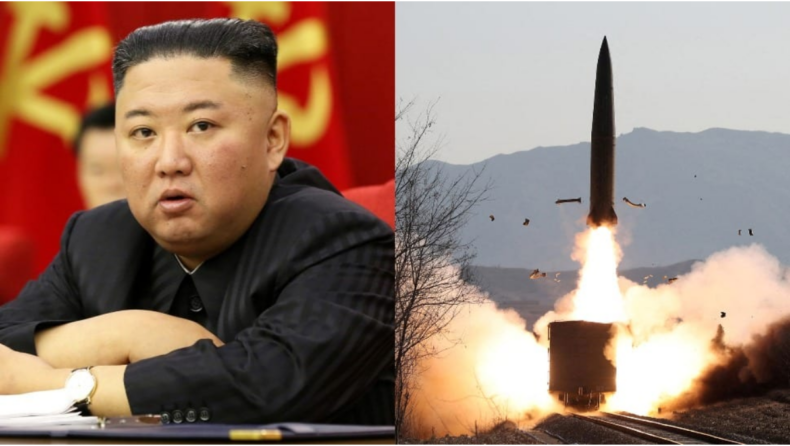It has been reported that this Sunday, North Korea launched a ballistic missile into the ocean off its east coast ahead of upcoming military exercises involving an aircraft carrier between South Korean and American military, as well as US Vice President Kamala Harris’ visit to the region.
The short-range ballistic missile, according to South Korea’s military, was launched just before 7 a.m. local time from a location close to the Taechon area of North Pyongyang Province. It travelled around 600 km (373 miles) with a speed of Mach 5 and an altitude of 60 km.

The Joint Chiefs of Staff of South Korea declared in a statement that North Korea’s launch of a ballistic missile was “a grave provocation that threatens the peace and security of the Korean Peninsula, as well as the global community.”
After the launch, the commander of U.S. Forces in Korea, Paul LaCamera, and the chairman of the Joint Chiefs of Staff, Kim Seung-kyum, discussed the situation and reaffirmed their readiness to respond to any North Korean threat or provocation.
The launch was denounced by South Korea’s National Security Council as an unjustified act of provocation and an apparent violation of the United Nations Security Council Resolutions during an emergency meeting to explore response strategies.
Yoon Suk-yeol, the president of South Korea, was briefed on the launch, according to the presidential office. Yoon Suk-yeol landed in Seoul late on Saturday from a tour to Britain, the United States, and Canada. Yeol, who was elected in May, has pledged to take a harder line against North Korea and to forge better ties with the US.
Click here to watch the video:
JAPAN’S RESPONSE
Defence Minister Yasukazu Hamada of Japan stated that the ballistic missile may have flown on an erratic trajectory and that Japan believed it reached a maximum altitude of 50 kilometres. Hamada claimed that it was outside of Japan’s exclusive economic zone and that there had been no reports of shipping or air traffic issues. The coast guard of Japan confirmed the launch and advised ships to “be cautious.”
According to analysts, several of the short-range missiles that North Korea has launched recently were built with manoeuvrability during flight and a lower, “depressed” trajectory in mind.
If cruise missile launches are included, this one marks the nineteenth, an unparalleled rate, according to Hamada.
He said that Japan had delivered a protest through North Korea’s embassy in Beijing. “North Korea’s behaviour poses a threat to the peace and security of our country, the region, and the world community and to do this as the Ukraine invasion unfolds is unacceptable,” he said.
In a statement issued following the launch, the U.S. Indo-Pacific Command reiterated the U.S. commitment to the defense of South Korea and Japan while confirming that it was aware of the launch and closely discussing with allies.
The ballistic missile launch shows the destabilizing effects of the DPRK’s illegal WMD and ballistic missile programmes, even if we have determined that this event does not constitute an immediate threat to American personnel or territory, or to our friends.
COMBINED DRILLS
The launch occurs after the USS Ronald Reagan, a nuclear-powered American aircraft carrier, docked in South Korea on September 26 for a four-day exercise with South Korean forces, and before Harris’s planned trip to Seoul this week.
After launching eight short-range ballistic missiles in a single day at the beginning of June, the North carried out its first launch of this kind, prompting the United States to ask for more sanctions for violating U.N. Security Council resolutions.
North Korea has attacked prior joint drills by the United States and South Korea as evidence of their hostile actions and opposes U.N.resolutions as a violation of its sovereign right to space exploration and self-defense.
The drills have also drawn criticism from Russia and China, who have encouraged all parties to avoid taking acts that might exacerbate regional tensions and advocated for an easing of the sanctions..
The United States and South Korea declared they would increase joint drills and military demonstrations of might to dissuade Pyongyang after North Korea conducted an unprecedented number of missile tests this year, including for the first time since 2017 its intercontinental ballistic missiles.
Professor of international affairs at Ewha University in Seoul, Leif-Eric Easley, asserted that “defence drills will not stop North Korean missile tests.”
He said, “The allies should not let provocations stop them from undertaking military training and exchanges needed to maintain the alliance.” But U.S.-South Korea security cooperation aids in deterring a North Korean strike and countering Pyongyang’s coercion, he said.

Source: North Korea’s Korean Central News Agency (KCNA)
According to the Yonhap news agency in South Korea, which cited the South’s military, North Korea may also be getting ready to test a submarine-launched ballistic missile (SLBM). North Korea’s leader, Kim Jong-un, ruled out the chance of discussions on denuclearization as the country passed a legislation earlier this month declaring itself to be a nuclear weapons state. Pyongyang conducted six nuclear tests between 2006 and 2017 despite international sanctions.













